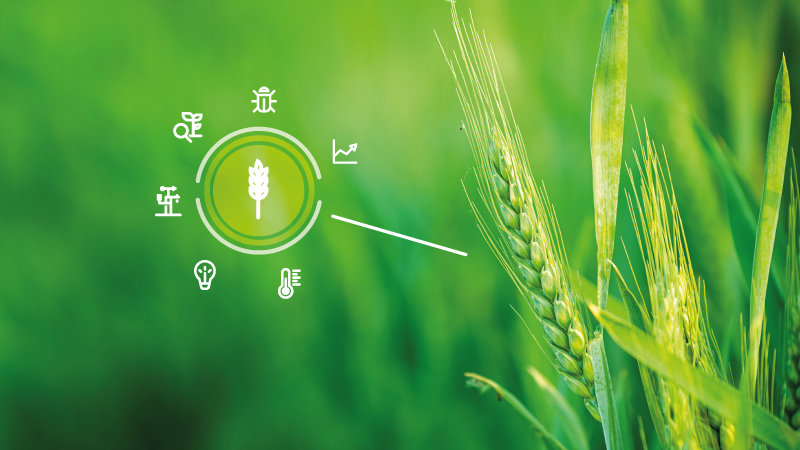Yellow rust and septoria are diseases that affect autumn-winter cereals, especially wheat, and can cause great damage by significantly reducing the quality and quantity of the final product.
DSS (Decision Support Systems) can help farmers combat their spread, but first let’s get to know these types of diseases better:
Yellow rust (Puccinia striiformis)
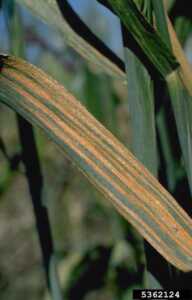
Howard F. Schwartz, Colorado State University, Bugwood.org
It’s one of the three forms of rust that affect wheat: they are distinguished because they have different colors, but the pustules, the time of appearance and the levels of damage are also very different.
Yellow rust is also called “stripe rust” because of the characteristic arrangement of the pustules. It is the first form of rust that appears in spring, although not every year, and mainly affects the leaves.
This disease has recently demonstrated a remarkable capacity to adapt to climate change, which is why it is generating more and more concern.
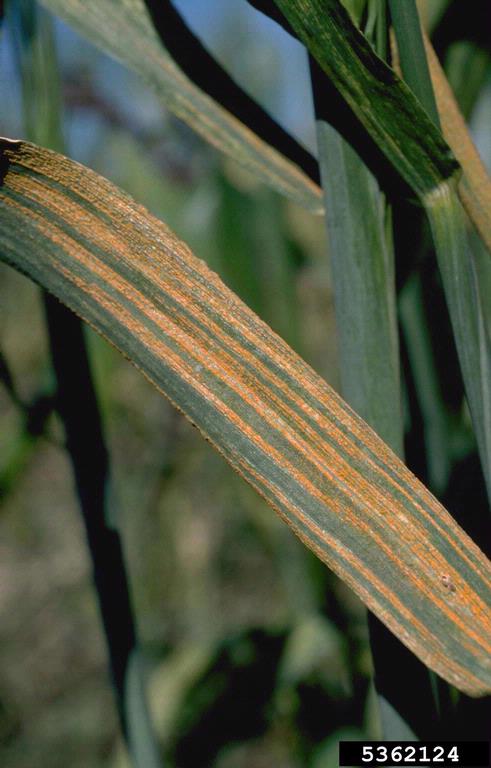
Puccinia striiformis
Howard F. Schwartz, Colorado State University, Bugwood.org
It’s one of the three forms of rust that affect wheat: they are distinguished because they have different colors, but the pustules, the time of appearance and the levels of damage are also very different.
Yellow rust is also called “stripe rust” because of the characteristic arrangement of the pustules. It is the first form of rust that appears in spring, although not every year, and mainly affects the leaves.
This disease has recently demonstrated a remarkable capacity to adapt to climate change, which is why it is generating more and more concern.
Septoria (Septoria Sacc.)
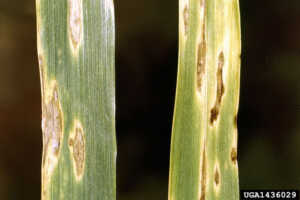
Clemson University – USDA Cooperative Extension Slide Series , Bugwood.org
It’s the most feared disease of wheat, along with Fusariosis, due to the significant yield losses related to the damage it causes to the foliar system. In recent years it has spread given the ideal climatic conditions for its development. It affects various organs, first of all the leaves, followed by nodes, spikes and grain.
It manifests itself as an apparent dryness on the leaves, but the appearance of grayish brown areas, edged with yellow on the leaves, culms and glumes, makes it unmistakable.
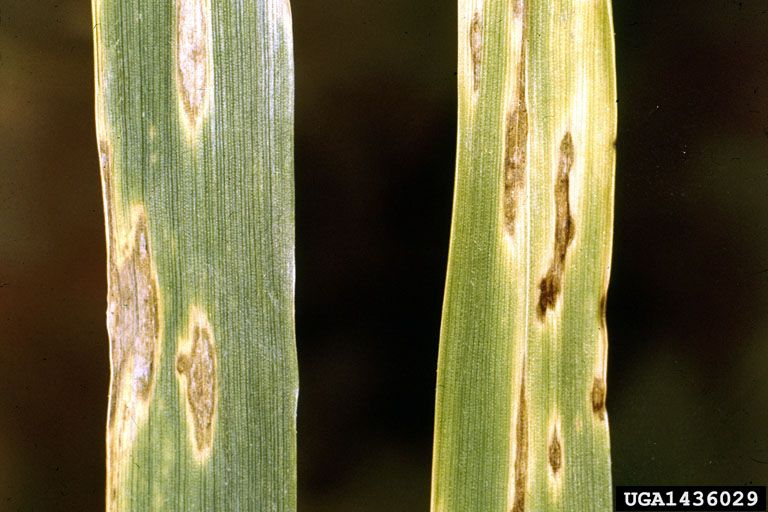
Septoria tritici
Clemson University - USDA Cooperative Extension Slide Series , Bugwood.org
It’s the most feared disease of wheat, along with Fusariosis, due to the significant yield losses related to the damage it causes to the foliar system. In recent years it has spread given the ideal climatic conditions for its development. It affects various organs, first of all the leaves, followed by nodes, spikes and grain.
It manifests itself as an apparent dryness on the leaves, but the appearance of grayish brown areas, edged with yellow on the leaves, culms and glumes, makes it unmistakable.
How to monitor and combat Septoriosis and Yellow Rust with DSS
Agricolus provides specific defense forecast models for both diseases.
The Septoria (Septoria Sacc.) model uses a calculation system based on hourly detection of temperatures, precipitation and humidity to estimate the probability of daily infection.

On the other hand, the model for Yellow Rust (Puccinia striiformis) uses data from the average temperature, precipitation and humidity to estimate the probability of daily infection, considering the latency period.
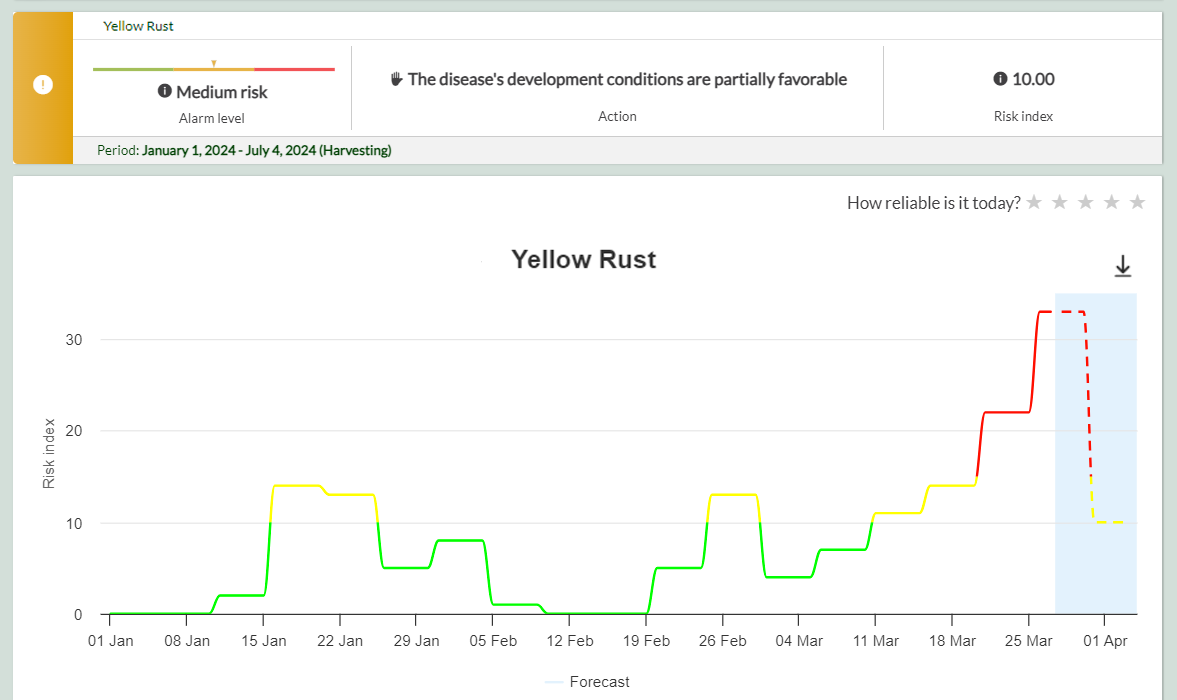
The two defense models give an indication of the potential risk of disease development, with a forecast of seven days. The model starts from the sowing date, indicated when the user creates the field, and ends with the introduction of the harvest operation.
These models also take into account the treatments carried out: the inclusion of a suitable product to combat diseases therefore reduces the risk of infection estimated by the model. To simplify and facilitate these insertions, Agricolus has integrated the Fitogest® agrochemical database.
For cereal farmers, the use of satellite data is also essential: its correct interpretation, in fact, reduces the number of interventions in the field. In practice, the analysis of vegetation indices developed from satellite images allows to quickly identify if there’s an outbreak of the disease, while forecast models indicate whether it is necessary to carry out a treatment to protect the crop.
The Agricolus DSS specific for autumn-winter cereals, GrainDSS, provides a series of useful functions for the defense against Septoria and Yellow Rust (as well as Fusariosis), but also for the 360° agronomic management of these crops.


